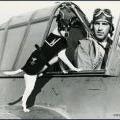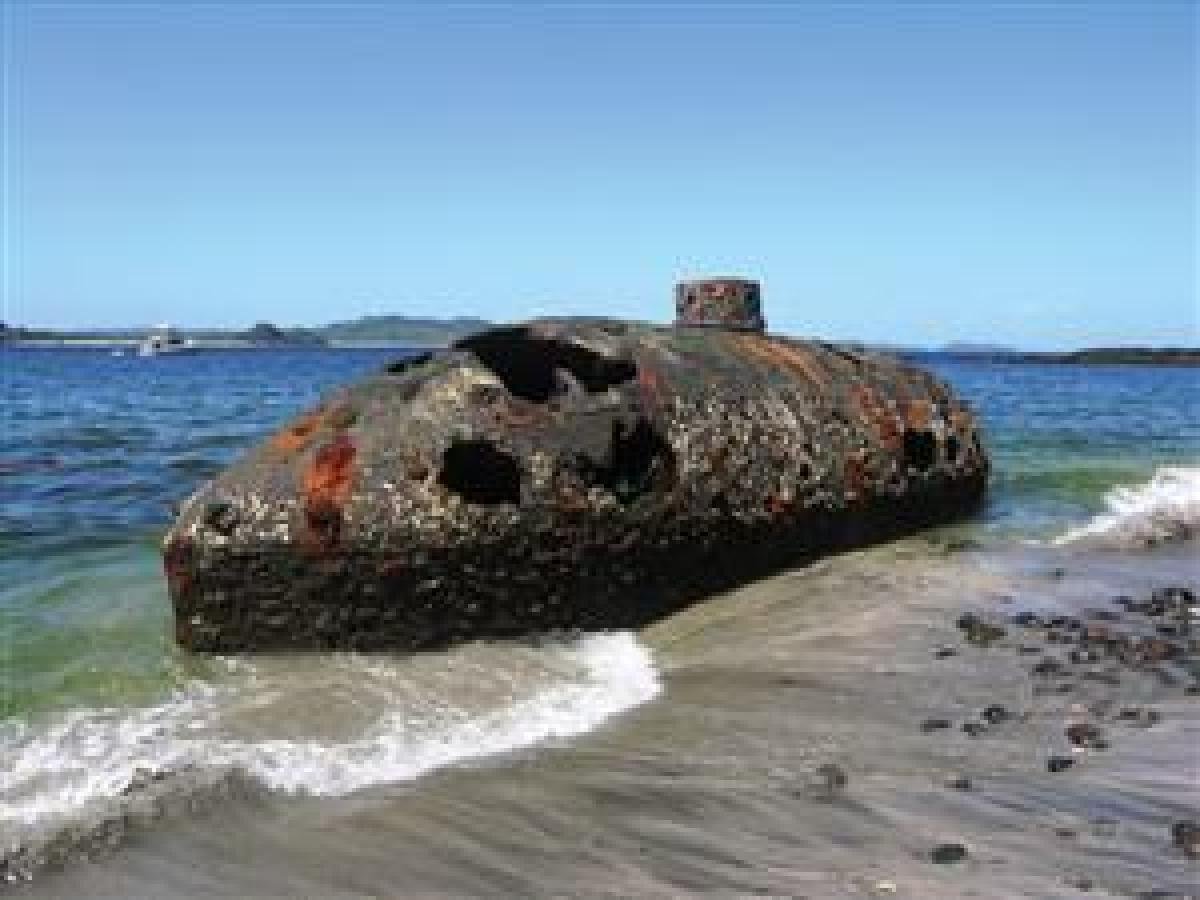While the search for the Alligator continues, one of her American submersible cousins rests in the intertidal zone of Isla San Telmo, the westernmost of Panama's Pearl Islands. Abandoned on an isolated beach in 1869, the rusting Sub Marine Explorer is one of the oldest surviving submarines known to exist. The deep-diving boat was built in Brooklyn in 186365. After successful trials in New York's East River in 1866—during which her inventor, Julius Hermann Kroehl, and his backers unsuccessfully tried to sell the craft to the U.S. Navy—the Explorer embarked on a new career in Panama.
In early 1867, her owners, the Pacific Pearl Company of New York, partially dismantled the boat, shipped her piecemeal by steamer to Panama, and then transported her across the isthmus to the Pacific coast on a railcar. There, Kroehl reassembled and readied the Explorer for dives to harvest pearls and pearl oysters from the depths of Panama Bay.
Born in 1820, Kroehl was a brilliant engineer who had immigrated to New York in 1844 from his native Prussia. After a career that included working as a daguerreotype photographer, iron manufacturer, and engineer (he had a leading role in building New York's Crystal Palace and a cast-iron firewatch tower that remains standing in New York City's present-day Marcus Garvey Park), Kroehl turned his attention to undersea blasting and harbor clearance in 1855. While working to clear obstructions in the East River, Kroehl met New York inventor Van Buren Ryerson, who showed him a unique diving bell that Ryerson called his "Sub Marine Explorer." Using compressed air and a water-ballast system, Ryerson's bell convinced Kroehl that such craft were the means to work in and conquer the underwater world.
During the Civil War, Kroehl first served as a civilian naval contractor and later as an acting volunteer lieutenant in the U.S. Navy. In the spring of 1862, prior to the Union capture of New Orleans, he was unable to clear a path through hulks and chains blocking the Mississippi River at Forts Jackson and St. Philip. Later that year he was assigned to harbor clearance and underwater blasting on the James River and off Wilmington, North Carolina.
Back on the Mississippi and serving under Rear Admiral David Dixon Porter in 1863, Kroehl participated in the Vicksburg campaign, but his naval career ended when yellow fever nearly killed him. During his recuperation in Washington, D.C., he remembered Ryerson's diving bell, and with backing from a group of prominent businessmen and politicians, he designed a submarine that incorporated many of Ryerson's principles but was remarkably different.
The completed craft, also named the Sub Marine Explorer, was 36 feet long and 10 feet in diameter. Made of cast and wrought iron, the boat displaced 80 tons. While she shared some similarities to the Alligator and another contemporary U.S. submarine, the Intelligent Whale, the Explorer featured a novel design and was a more complex and sophisticated craft. Her hull was divided into three areas: a compressed air chamber lying beneath the hull's turtleback-shaped upper hull, an interior working chamber for the crew, and a series of ten ballast tanks. To dive, a steam tender filled the high-pressure chamber with compressed air up to 200 psi. With the chamber charged, Kroehl and his crew opened seacocks from a central control station and simultaneously flooded the tanks to start the submarine's descent. As the water rushed in, the air it displaced bled into a series of discharge pipes that fed through a central manifold and then exhausted out a valve in the conning tower. Kroehl trimmed the boat by regulating the flooding and with blasts of pressurized air to expel seawater from the ballast tanks.
Once at depth, Kroehl allowed enough pressured air into the working chamber to equalize with the ambient sea pressure. This allowed the crew to open hatches in the bottom of the submarine and work on the seabed, collecting oysters and pearls. A hand-cranked propeller generated up to four knots of speed, and a system of spraying seawater through chemicals refreshed the air. To surface, enough pressurized air would be released to blow the tanks dry. The Explorer made a series of successful dives, but without Kroehl, who died in Panama's tropical climate in September 1867 after his fever returned.
The Explorer's only flaw was not one of design but of execution. The effects of pressure on the human body were not fully understood, nor was how to combat decompression sickness, also known as caisson disease or the bends. In 1869, following a series of dives off Isla San Telmo, the submarine crew was stricken with what newspapers reported as "fever," while local oral tradition suggests they died after making four-hour-long dives to more than 100 feet and then quickly resurfacing. Contemporary newspaper accounts confirm the dangerous dives and lengthy exposures to pressure. That definitely led to decompression sickness, which can be fatal.
The Explorer was left in a San Telmo cove and her identity eventually forgotten until a chance rediscovery in 2000. As a vacationing archaeologist visiting the Pearl Islands, I was told of the mystery submarine visible only at low tide and of a craft rumored to be a Japanese two-man midget submarine abandoned after an aborted World War II attack on the Panama Canal. The truth—revealed after archaeological documentation and consultation with historians Eugene Canfield, Richard Wills, Mark Ragan, Henry Silka, and Robert Schwemmer—was far more interesting. Since 2003, I have led successive expeditions to San Telmo resulting in a series of detailed plans of the Explorer that now resides in the Historic American Engineering Record collection in the Library of Congress, more than 300 pages of historical and archaeological documentation, two documentary films, and calls from interested parties to rescue the rusting, battered craft from the surf and place her in a museum.
Whether or not a rescue materializes, we have learned a great deal from the wreck of the Explorer and in doing so have placed her and her long-dead inventor in their proper place as pioneers in the long saga of successful submarine development. If not for the problems with pressure sickness (the cure for the bends was not discovered until 1907) and Kroehl's untimely death, I am convinced he and his Sub Marine Explorer could have given later submarine inventors John Holland and Simon Lake a run for their money as they took the stage in the last quarter of the 19th century.
Also from the Naval Institute:




